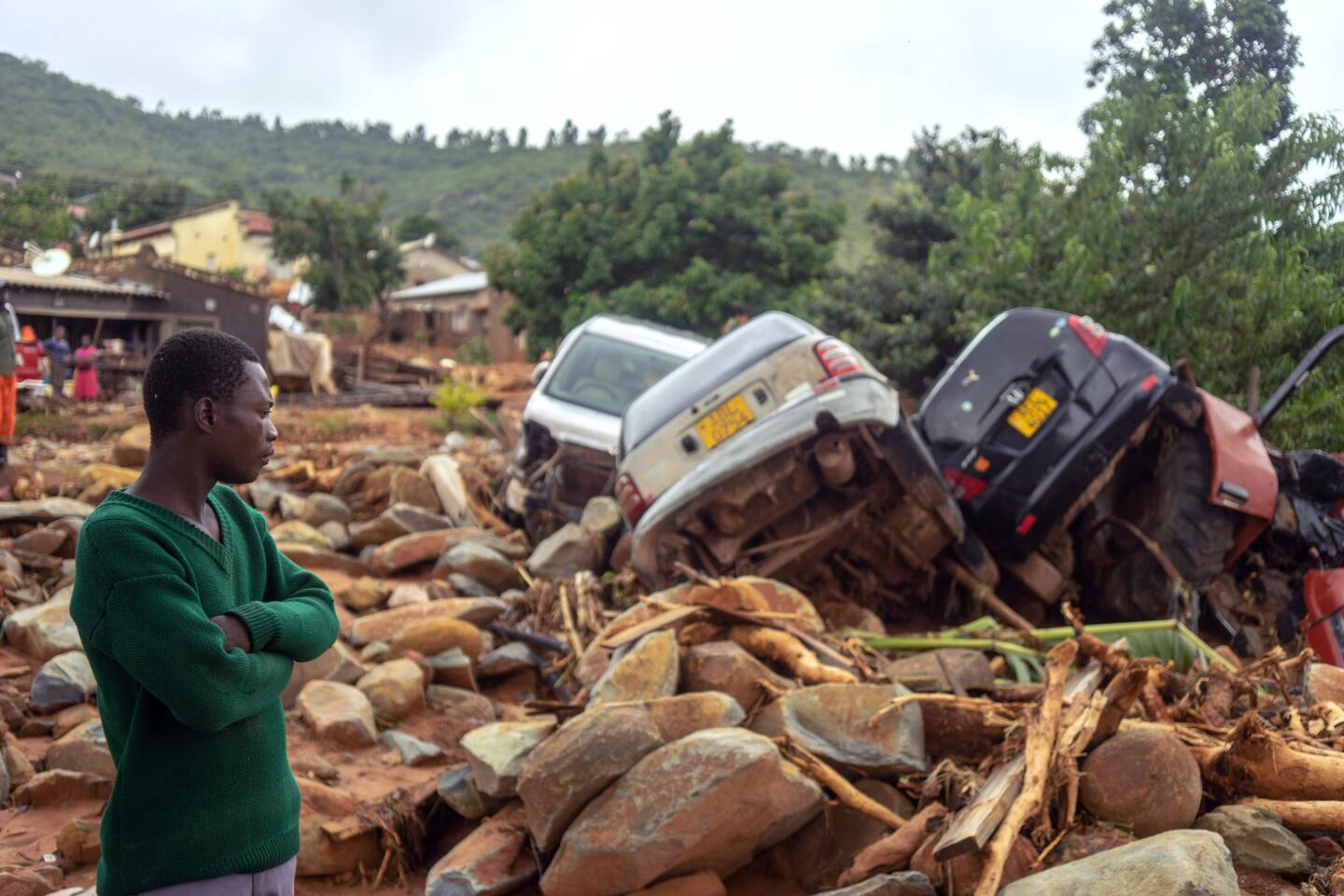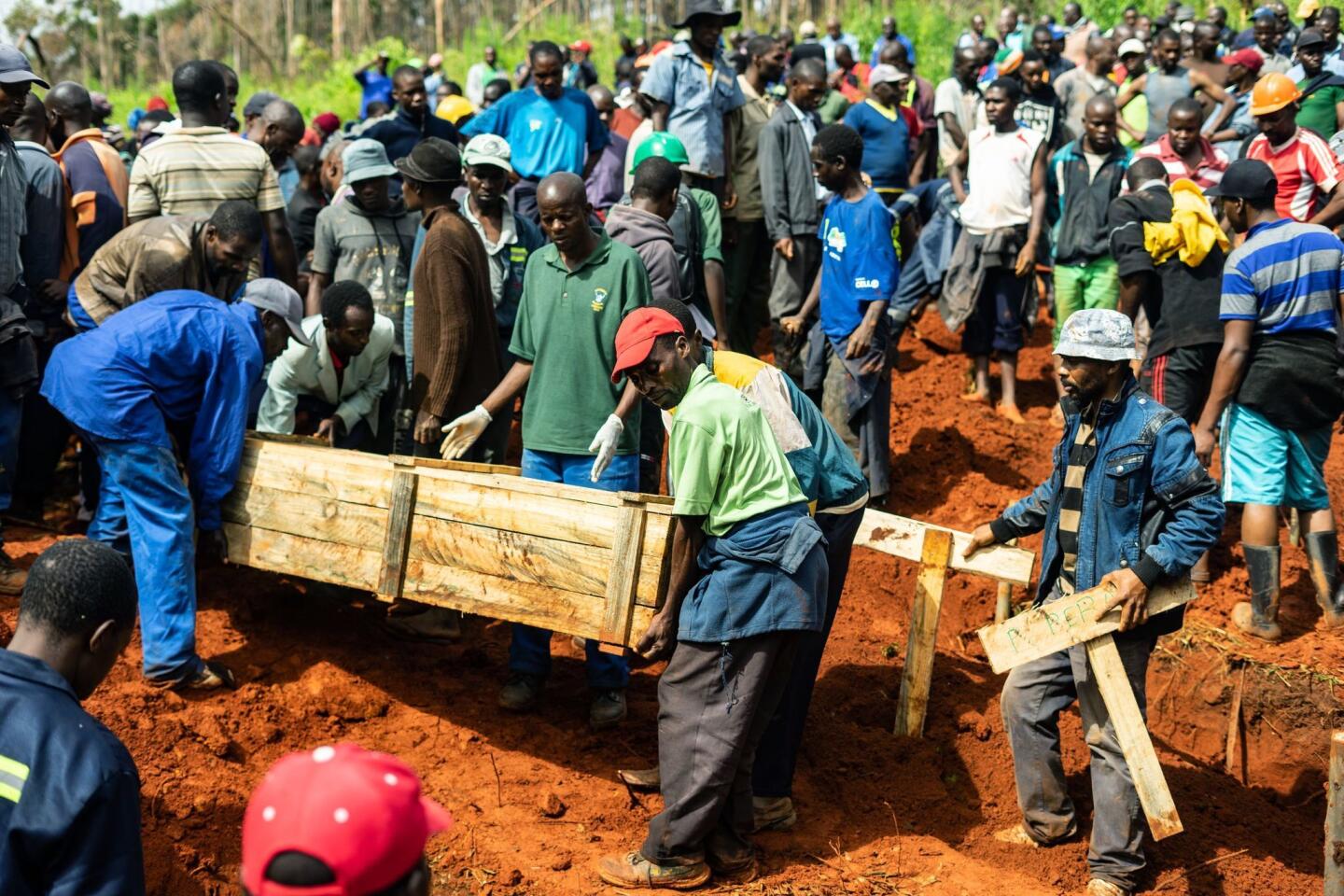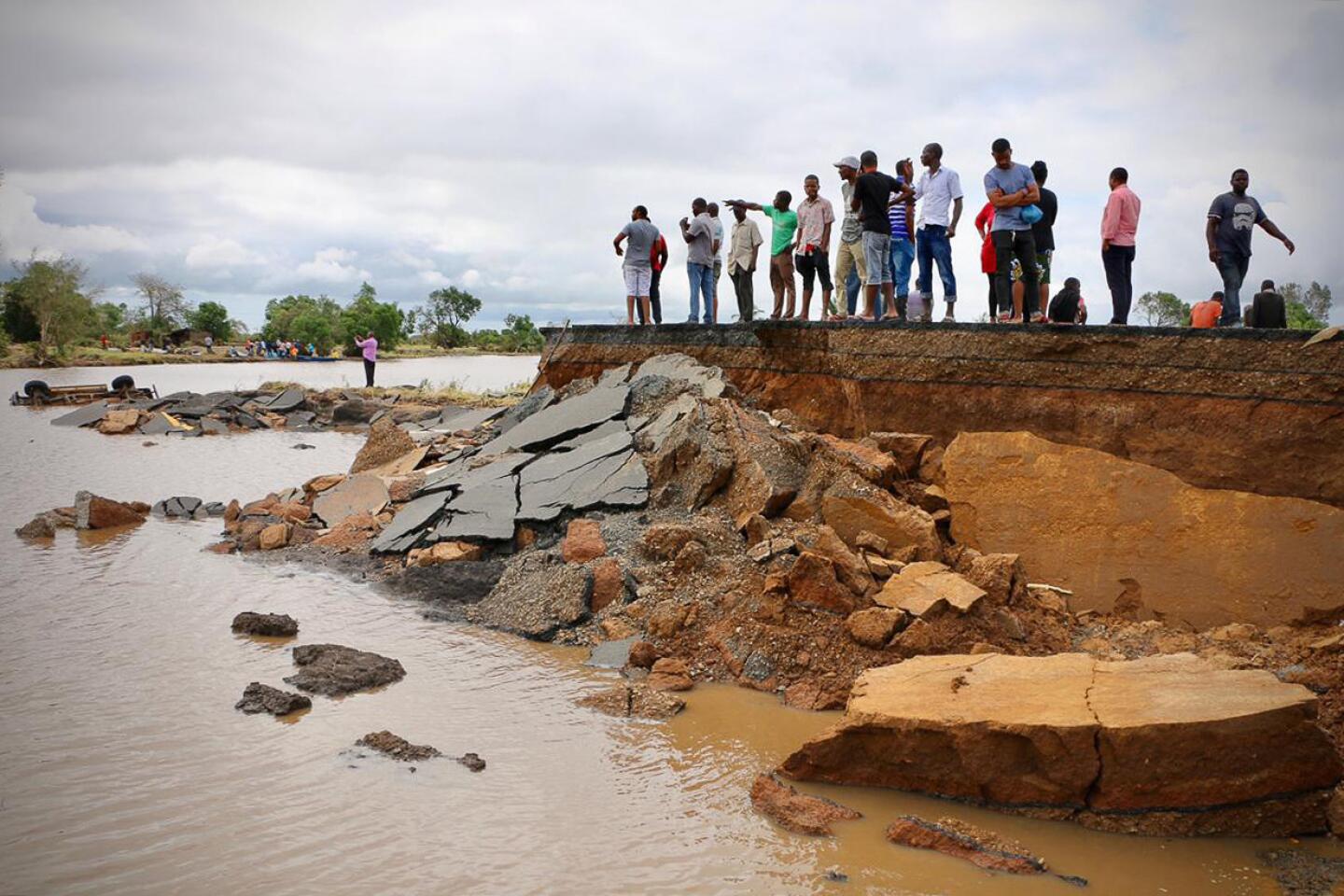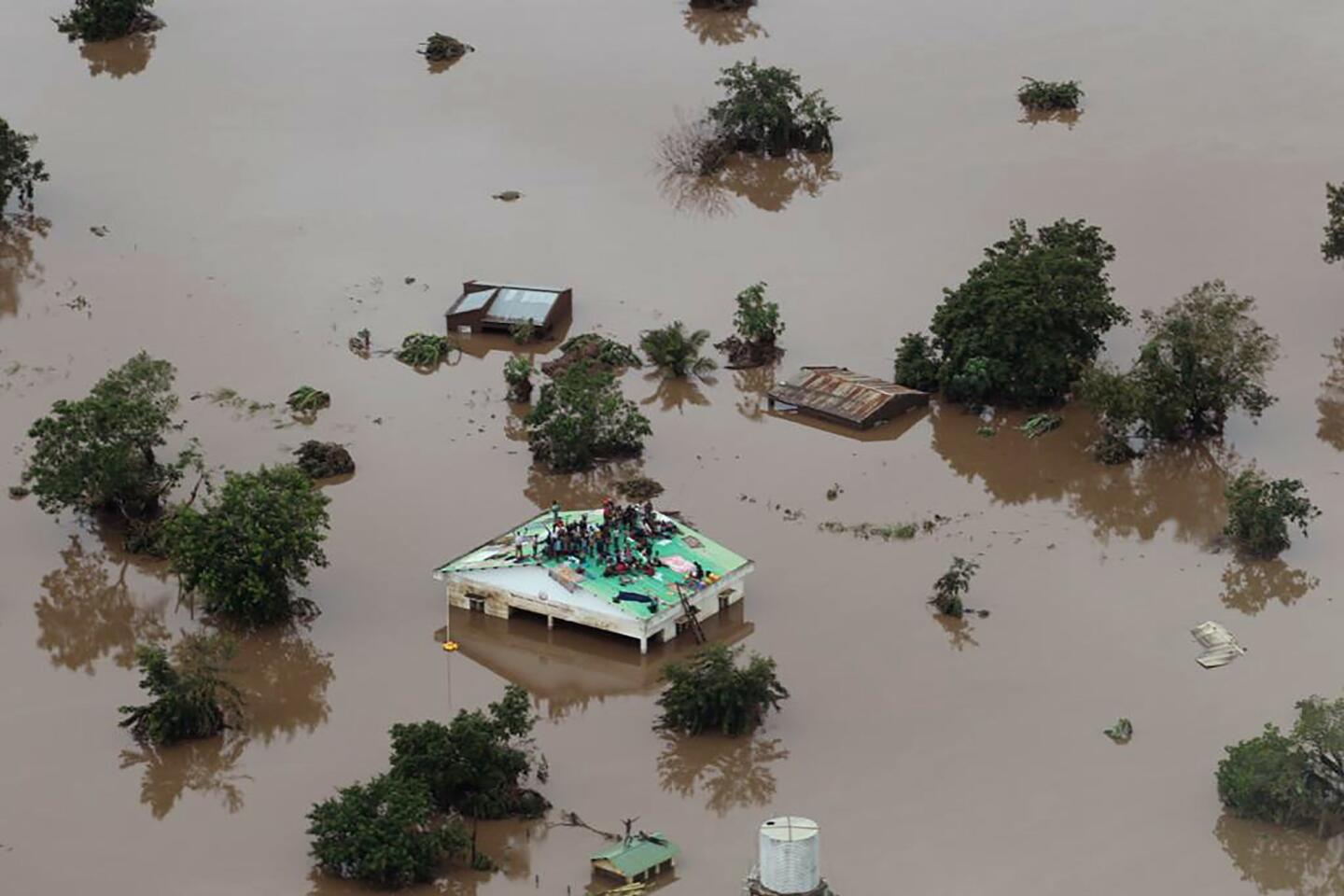More than 1,000 feared dead after Cyclone Idai slams into Mozambique
- Share via
Reporting from JOHANNESBURG, South Africa — More than 1,000 people were feared dead in Mozambique four days after a cyclone slammed into the country, submerging entire villages and leaving bodies floating in the floodwaters, the nation’s president said.
“It is a real disaster of great proportions,” President Filipe Nyusi said.
Cyclone Idai could prove to be the deadliest storm in generations to hit the impoverished southeast African country of 30 million people.
It struck Beira, an Indian Ocean port city of half a million people, late Thursday and then moved inland to the nations of Zimbabwe and Malawi with strong winds and heavy rain. But it took days for the scope of the disaster to come into focus in Mozambique, which has a poor communication and transportation network and a corrupt and inefficient bureaucracy.
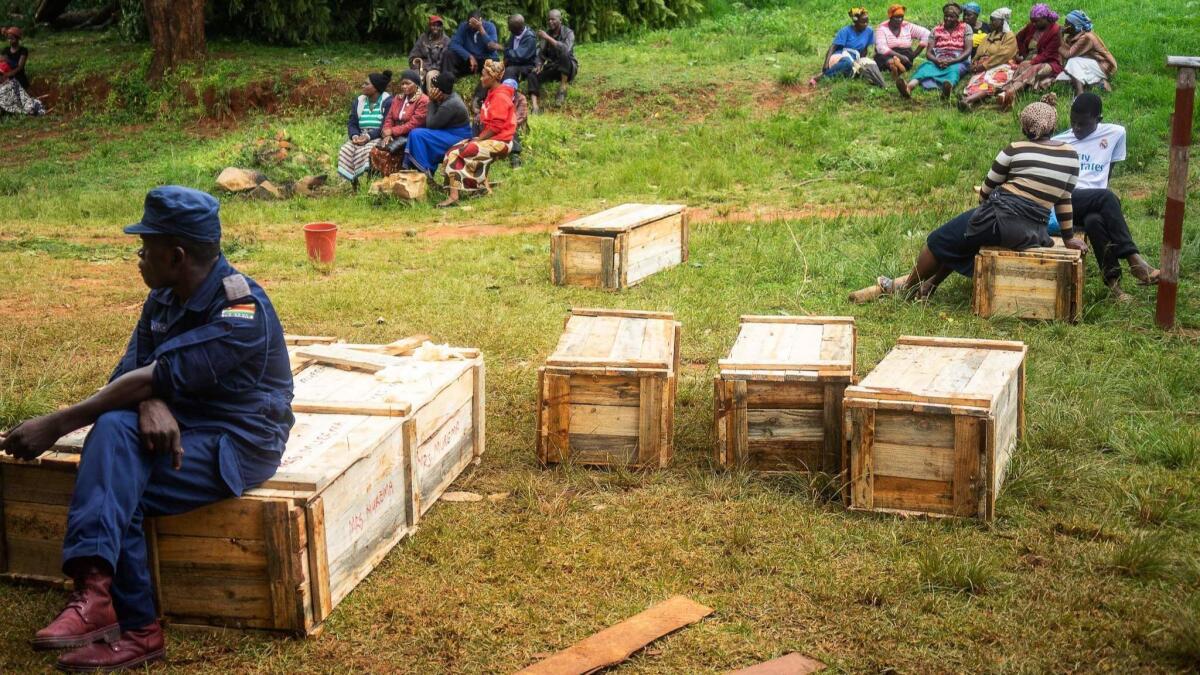
Speaking on state Radio Mozambique, Nyusi said that although the official death toll stood at 84, “it appears that we can register more than 1,000 deaths.”
Emergency officials cautioned that although they expect the death toll to rise significantly, they have no way of knowing if it will reach the president’s estimate.
More than 215 people were killed by the storm in the three countries, including more than 80 in Zimbabwe’s eastern Chimanimani region, according to official figures. Hundreds more were reported missing and nearly 1,000 homes destroyed in eastern Zimbabwe alone.
U.N. agencies and the Red Cross helped with rescue efforts that included delivering food and medicine by helicopter in the impoverished countries.
Mount Chiluvo in central Mozambique was badly hit by flooding. One resident said he heard a loud noise, like an explosion, and suddenly saw a river of mud rolling toward his home.
“I was indoors with my children, but when we looked we saw mud coming down the road towards the houses and we fled,” Francisco Carlitos told Lusa, the Portuguese News Agency. The family lost their home and possessions but safely reached higher ground.
The country’s president, who cut short a visit to neighboring Swaziland over the weekend because of the disaster, spoke after flying by helicopter over Beira and two rural provinces, where he reported widespread devastation.
“The waters of the Pungue and Buzi rivers overflowed, making whole villages disappear and isolating communities, and bodies are floating,” Nyusi said.
The United Nations’ humanitarian office issued flood warnings and said heavy rains were forecast for the next 24 hours, including in areas already hit hard by Idai.
The destruction in Beira is “massive and horrifying,” said Jamie LeSueur, who led a Red Cross team that had to assess the damage by helicopter because of the flooded roads. “The situation is terrible. The scale of devastation is enormous,” LeSueur said.
“Beira has been severely battered. But we are also hearing that the situation outside the city could be even worse. [Sunday], a large dam burst and cut off the last road to the city,” LeSuer said.
The U.N. also warned of devastation outside Beira, in particular of livestock and crops.
“As this damage is occurring just before the main harvest season, it could exacerbate food insecurity in the region,” the U.N.’s Office for Coordination of Humanitarian Affairs said.
Mozambique is a long, narrow country of 30 million people with a 1,500-mile coastline along the Indian Ocean. It is prone to cyclones and tropical storms this time of year.
In 2000, Mozambique was hit by severe flooding caused by weeks of heavy rain, a disaster made much worse when a cyclone hit. About 700 people were killed in what was regarded as the worst flooding in 50 years.
The country won independence from Portugal in 1975 and then was plagued by a long-running civil war. Its economy is dominated by agriculture, and its exports include prawns, cotton, cashews, sugar, coconuts and tropical hardwood timber. More recently it has been exporting aluminum and electric power.
More to Read
Sign up for Essential California
The most important California stories and recommendations in your inbox every morning.
You may occasionally receive promotional content from the Los Angeles Times.


